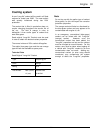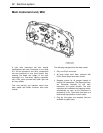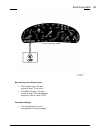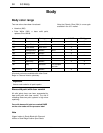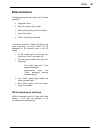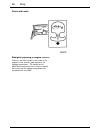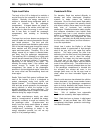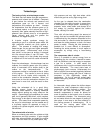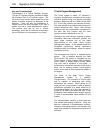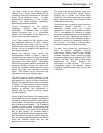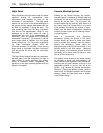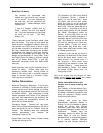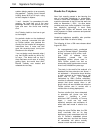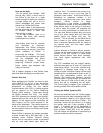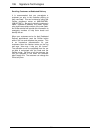
Signature Technologies 99
9-3
Turbocharger
The basics of why a turbocharger works
The Ideal Gas Law states that gas temperature,
pressure, and volume are all related. Compress
a gas (reduce the volume) and pressure and
temperature goes up. Let it expand, and
temperature and pressure go down. Increase
the temperature, and the pressure goes up (in
an enclosed space) or the volume goes up (it
expands). Also, gases naturally flow from a high-
pressure (low volume) area to a low-pressure
(larger volume) area and the greater the
difference, the bigger the push.
A 4-stroke engine produces energy by
expanding a gas in a confined space where the
high pressures created can push against a
piston. The process of creating this energy
heats the gas, so you get even higher pressures
and more power. Unfortunately, most of that
heat (which is the same as energy) is dumped
into the exhaust before it can be used. The
energy is simply not in the cylinder long enough
to transfer all of the heat into useful mechanical
energy.
Enter the turbocharger. A turbocharger has two
turbines; the exhaust gases spin one turbine,
which is connected (via a simple shaft) to the
turbine on the compressor-side. The
compressor turbine is connected to the air intake
of the engine. This results in more air being
forced into the air intake, which eventually is
routed to the combustion chamber. When you
force more air into the combustion chamber you
must force in more fuel, and the result is more
power.
Using the exhausted air is a good thing,
because energy (heat) that would have
otherwise been wasted is creating additional
energy without putting any major stress on the
engine. Supercharging accomplishes the same
goal, but is generally belt-driven, which requires
more energy to be spent to create the increased
airflow. This means that comparable power by
the use of a turbocharger can be created out of
a 4-cylinder engine as opposed to using 6-
cylinder or 8-cylinder engines, which are far less
fuel-efficient.
The exhaust side of a turbo
When an exhaust pulse exits the cylinder at high
temperature and high pressure, it gets merged
with other exhaust pulses and enters the turbine
inlet. Since the inlet is a very small space, very
high pressure and very high heat exists, which
means the gas has a very high energy level.
As the gas is released from the combustion
chamber into the turbine housing, it moves from
a small space to a larger space. Accordingly, it
expands, cools, slows down and dumps all of
the energy by pushing against the turbine
blades, causing it to rotate.
Thus, with all else being equal, the amount of
energy that can be created with exhaust turbine
is determined by the pressure differential at the
inlet and outlet (i.e. raise the turbo inlet pressure
and lower the outlet pressure, or both, and more
power is made). Raising the inlet pressure is
possible but is more difficult to accomplish.
Lowering the outlet pressure is much easier to
accomplish by simply using a freer-flowing
exhaust.
The compressor side of a turbo
Since it is possible to extract energy from an
expanding gas via a turbine, it stands to reason
that it is possible to use that energy to compress
a gas via a turbine. In other words, the
compressor side is just the exhaust turbine side
driven backwards. The exact same laws of
physics apply, just in reverse. Unfortunately, the
laws of physics have worked negatively because
the act of creating energy with the air intake to
compress it has significantly raised its
temperature. So, the air must be cooled again
without losing any pressure – thus the need for
an intercooler.
An intercooler simply places the airflow stream
between the turbo compressor outlet and the
combustion chamber through a radiator. The
more you can cool the airflow, the better,
because compressed or cooler air allows for
more air particles to be burned, once it reaches
the combustion chamber. The intercooler using
air and water allows for two stages of cooling to
take place in one area to be more effective in
the cooling process of turbocharging. Oil is
used on the moving parts within the
turbocharger as a cooling agent as well.



